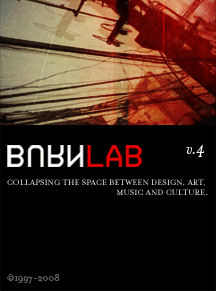When I first moved to New York in 1999 Giulianification was well underway, but the meatpacking district remained lower Manhattan's last bastion of seediness. The Chelsea Market was thriving and bistros were moving in, but it was still commonplace to see junkies and unusually tall prostitutes among the forklifts and animal blood seeping from under steel garage doors. The district has gentrified at break-neck speed over the past seven years, and seems to have tripled in pace since the start of High Line redevelopment. Now home to high design showrooms, countless French restaurants, and [unfortunately] the most grotesque nightlife scene this side of West Hollywood, the old Gansevoort Market area is now only recognizable by the rusty elevated freight line currently being transformed into a 21st century public promenade.
Gentrification is always a mixed bag. It can destroy the character which made a neighborhood intriguing to start with, but it can also bring unexpected benefits and opportunities. This week, Nicolai Ouroussoff ponders both.
We New Yorkers have a morbid fascination with pinpointing the death of a neighborhood scene. You wonder, for example, exactly when the seeds were planted for SoHo's grim destiny as an open-air mall. Was it 1971, when Leo Castelli opened his downtown gallery? The advent of Dean & Deluca's overpriced cheeses? Victoria's Secret underwear displays?
But the artists who bemoaned SoHo's gradual reinvention as a tourist mecca in the 1980s would have been dumbstruck by the pace of gentrification wrought by the High Line, an abandoned stretch of elevated railway tracks that will be transformed into a garden walkway from the meatpacking district to Chelsea.
Even before local activists picked the project's design team, Field Operations and Diller Scofidio + Renfro, two years ago, developers had begun circling the site like vultures. Today, the High Line risks being devoured by a string of developments, including a dozen or more luxury towers, a new branch of the Whitney Museum of American Art and a Standard Hotel. Already the area is a mix of the fashionable and the tacky, with tourists tottering from boutiques to nightclubs across its cobblestone streets, even as they recoil from the occasional whiff of raw meat.
Not all of these are run-of-the-mill development projects: they include potential designs by renowned talents including Renzo Piano and the Polshek Partnership. And even more promising, a few younger, relatively unknown talents like Neil Denari and Work Architecture are getting the opportunity to design major projects.
But the frenzied activity surrounding the High Line shows how radically the development climate in Manhattan has accelerated. No longer content to allow gentrification to proceed at its own tentative pace, developers now view even the humblest civic undertaking as a potential gold mine. City planners who once had to coax developers to build in rundown neighborhoods are groping for strategies to keep them at bay. Pretty much everyone who has walked the length of the weed-choked High Line agrees that its magic arises largely from its isolation. Carving its way through the urban fabric two to three stories above ground, it is framed mostly by the backs of buildings and billboards, with occasional views opening out to the Hudson or across Manhattan.
read more [NY Times]
Monday, December 25, 2006
Posted by:
Unknown
at
12/25/2006 11:31:00 PM
![]()
Subscribe to:
Post Comments (Atom)

No comments:
Post a Comment